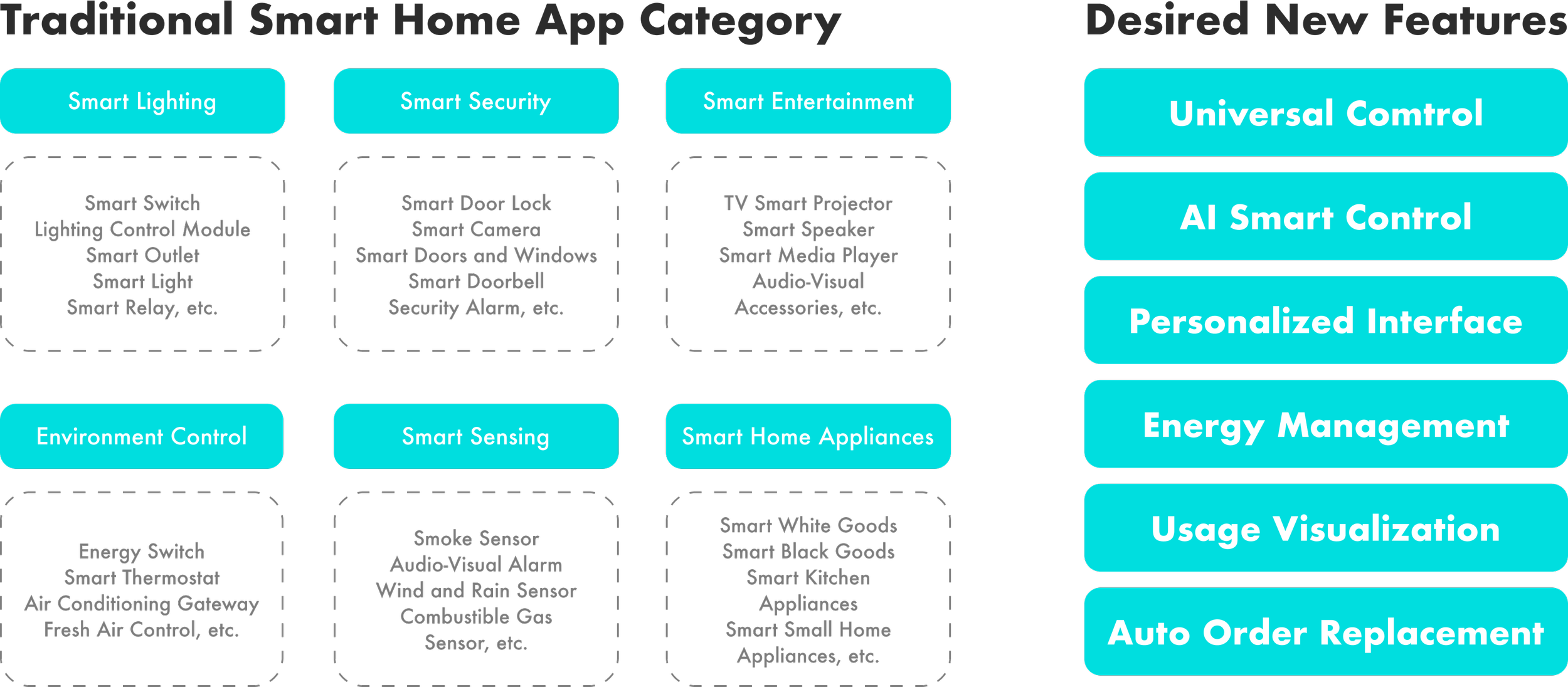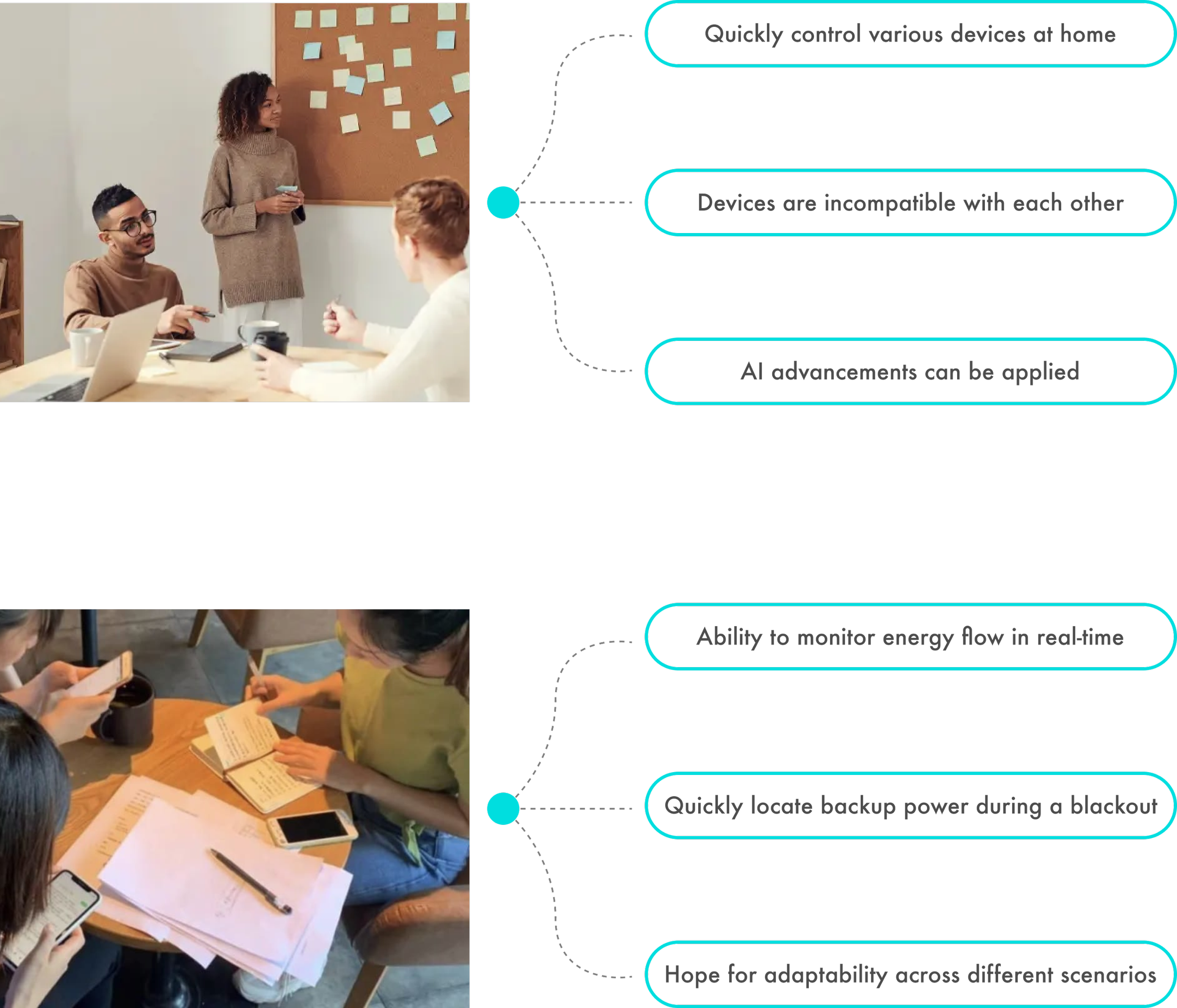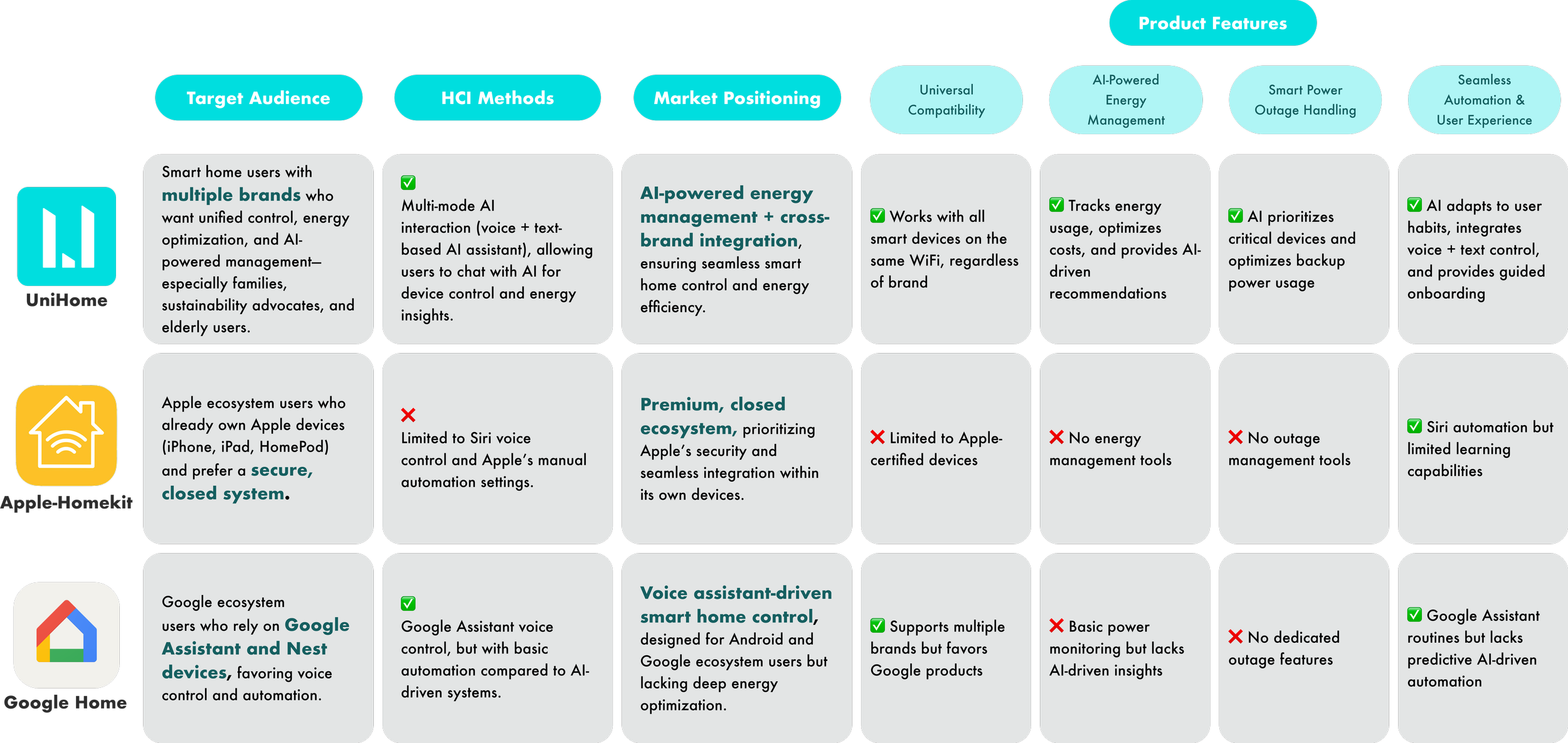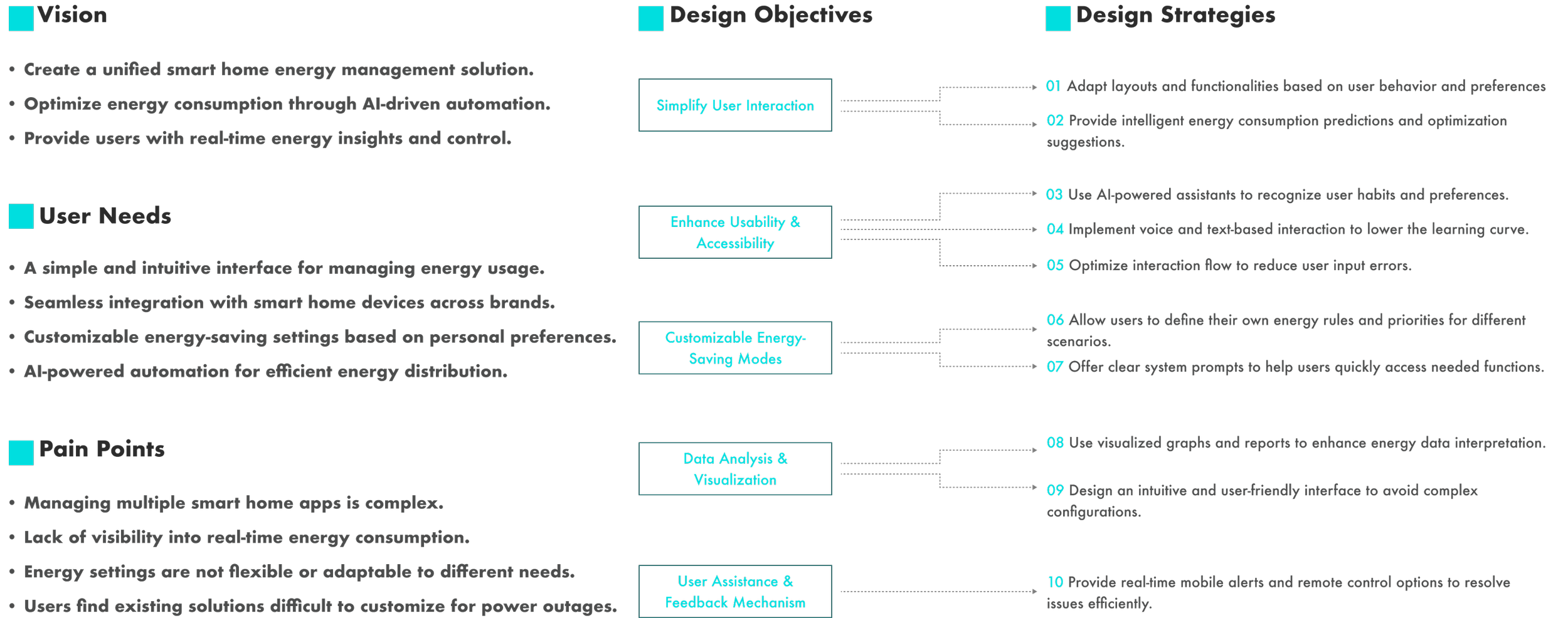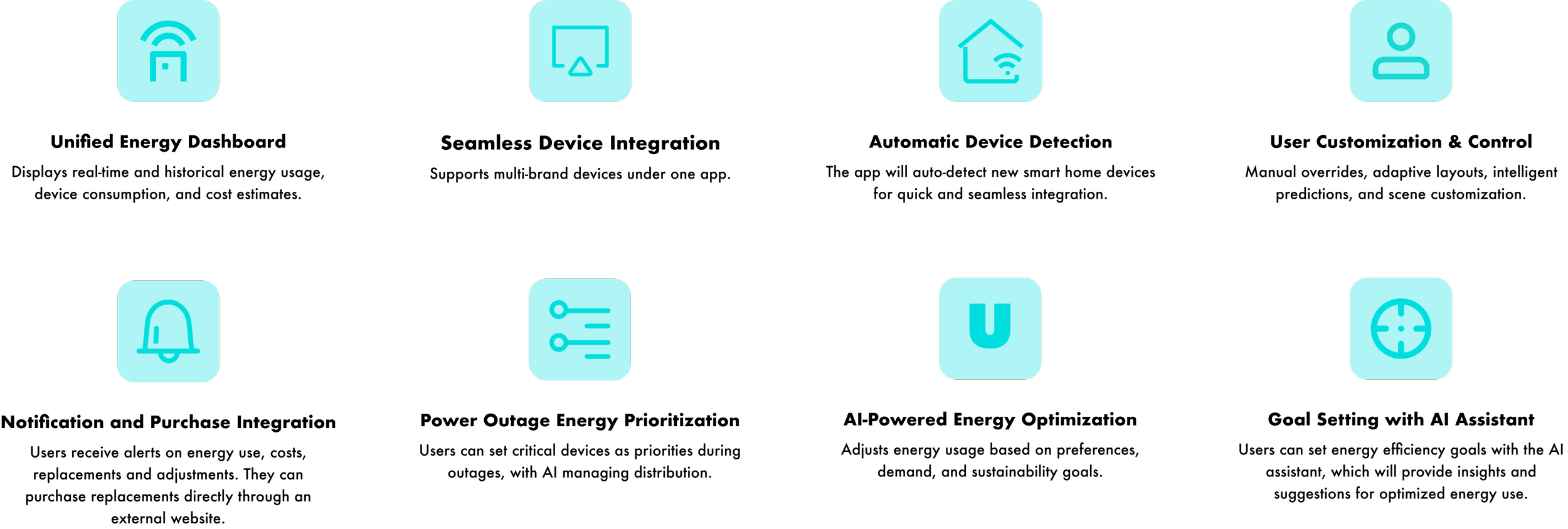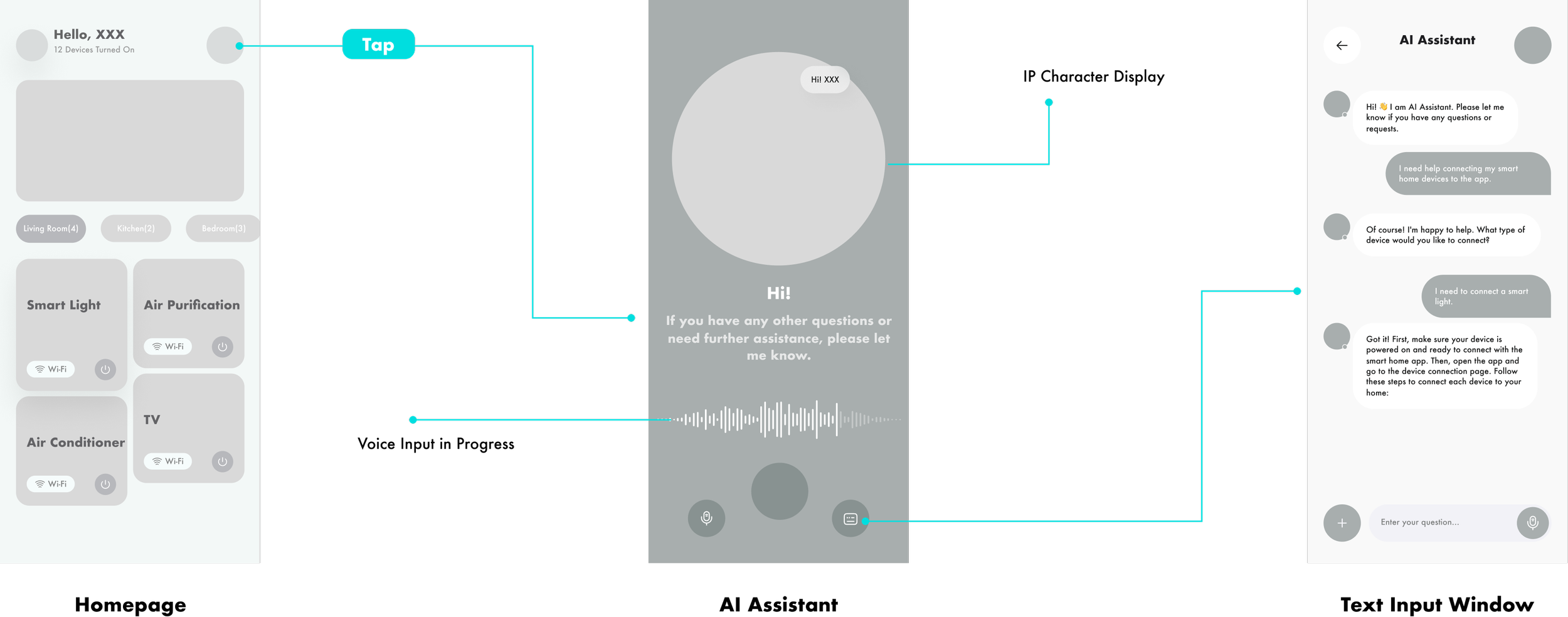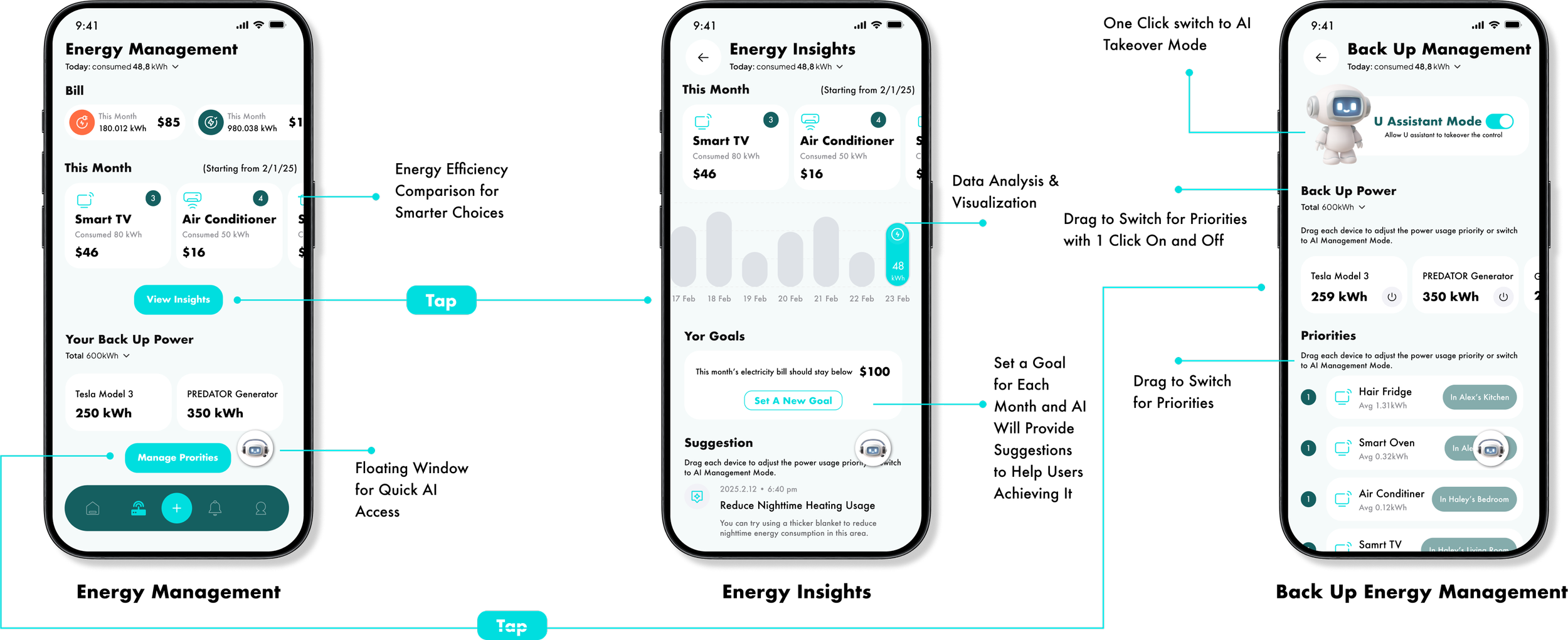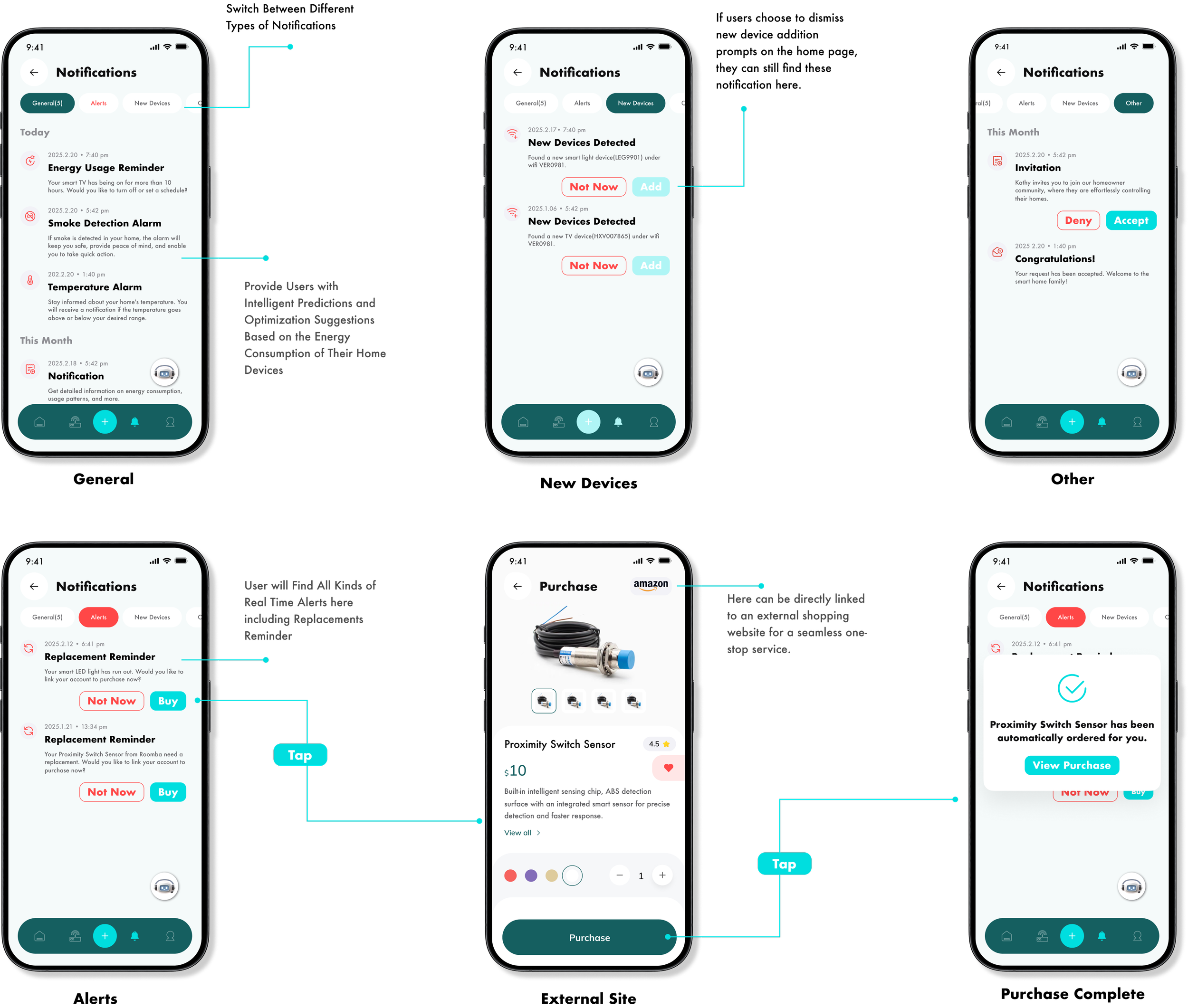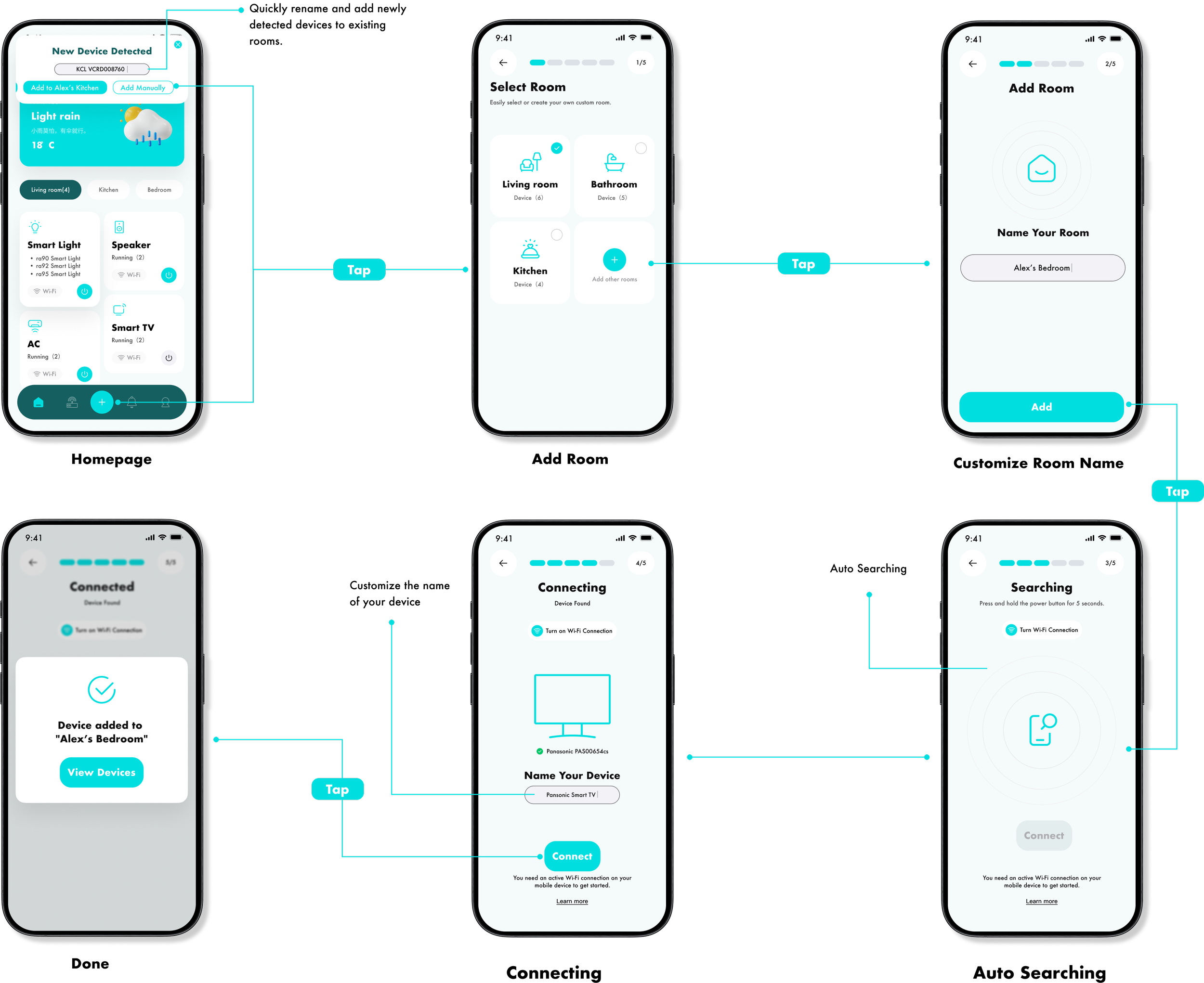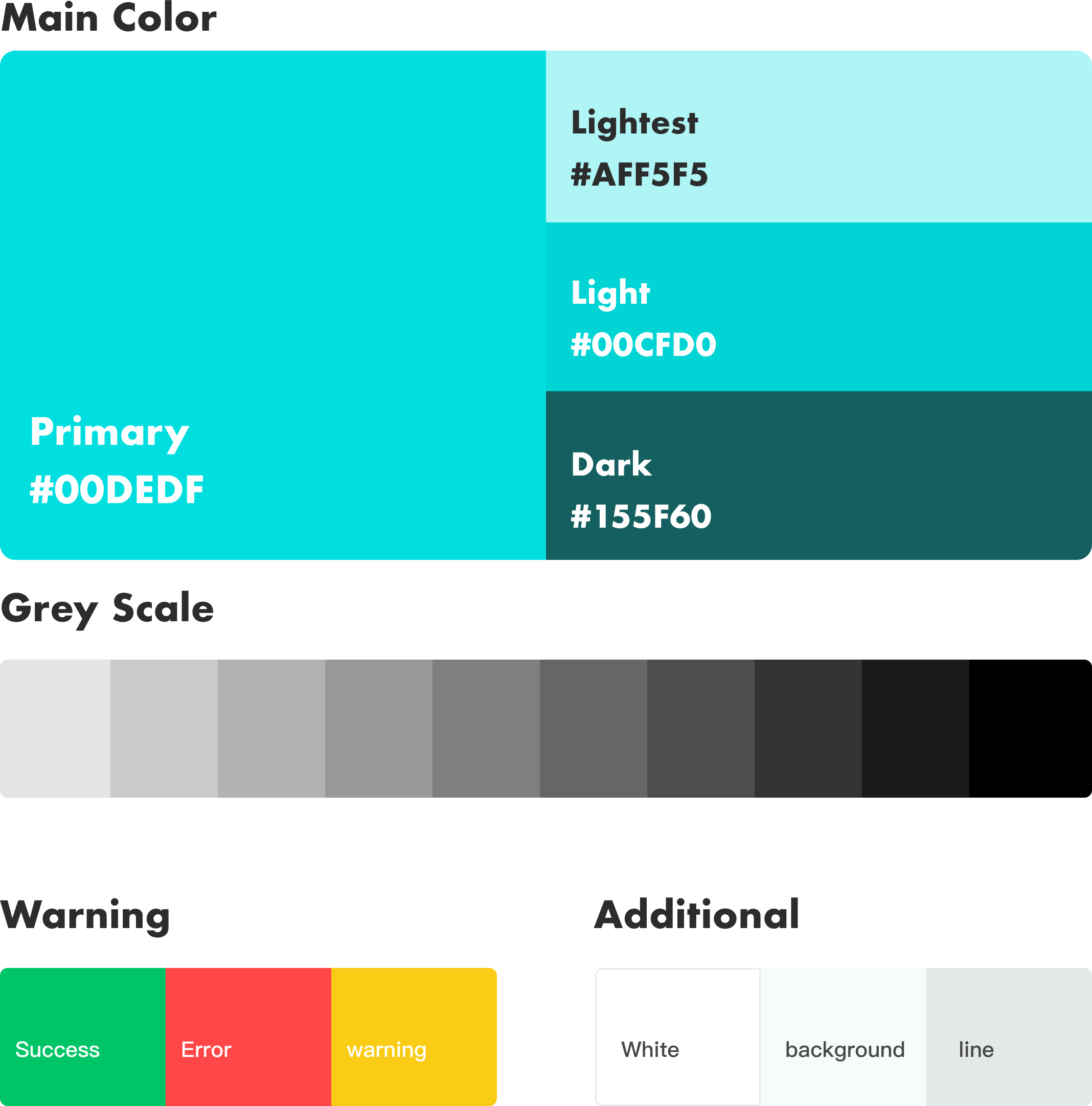Client:
Self
Role:
Lead Researcher + UIUX Designer
Duration:
3 Months
An AI-driven smart home solution that unifies control of all devices under one platform, regardless of brand. With advanced AI features, it optimizes energy management during power outages, automates device integration, personalizes user experiences, and enables seamless control through voice or text. It’s designed to make smart homes smarter, more efficient, and effortless to manage.

Product Background
Whole-house smart control has become the future trend for homes.
/WHY
The smart home industry suffers from fragmented control systems, with most devices tied to brand-specific apps, creating inefficiencies, inconvenience, and poor user experiences for households managing multiple brands. Current smart home applications also lack robust AI-driven features, particularly in energy management, leaving users without intelligent tools to optimize energy usage or effectively prioritize critical devices during power outages.
This project aims to develop an AI-driven smart home control app that unifies device management under one platform, enabling users to seamlessly control all devices connected to the same network, regardless of brand. Beyond offering comprehensive device control, the app will leverage AI to deliver advanced energy management, automating prioritization during power outages and optimizing energy usage in real time. Additionally, AI will enhance all aspects of the user experience, including device integration, personalized settings, predictive automation, and voice or text-based interactions, creating a smarter, more efficient, and user-friendly smart home ecosystem.

Market research and analysis
I began by analyzing global market trends and existing smart home ecosystems, identifying a major user pain point: fragmented control across different brand apps. This research shaped the vision for UniHome—an all-in-one, AI-powered platform designed to unify smart device management under one WiFi-connected system.
Three stages for Smart Home
Whole-house smart control has become the future trend for homes.

User Research
Online Survey
This survey collected a total of 52 valid responses. Through analysis and synthesis of the survey data, I gained a better understanding of user needs and pain points. This insight allows me to design and improve solutions based on real user demands, enhancing the overall user experience. (Below is a selection of survey excerpts.)
Insights
I gathered insights through interviews and surveys to identify key pain points, like complex onboarding and fragmented control across smart home apps.
User Interviews
Zoom interviews were conducted with two users representing different smart home setups. Mercury (24, Apartment Renter) owns three smart devices and finds switching between apps frustrating but is cautious about AI automation. Joe (38, Homeowner with Two Kids) owns eight or more devices, struggles with compatibility issues, and prioritizes energy cost savings and backup power management while valuing manual control options. These insights reinforced the need for AI-powered, cross-brand smart home integration.


Design Process
I conducted a competitive analysis comparing Apple HomeKit and Google Home, identifying key gaps in energy management, brand compatibility, and AI features. This helped define UniHome’s unique value—an AI-powered, brand-agnostic solution with smart energy optimization and power outage handling across all devices on the same WiFi.
01
Conducting a Competitive Analysis to Identify Market Gaps
I developed three key personas—Emily, Michael, and Robert—based on user research to reflect a range of needs, tech comfort levels, and household situations. These personas helped me prioritize features like simple onboarding, real-time energy insights, and customizable AI automation across a unified platform.
02
Creating Personas to Guide User-Centered Design
My goal was to create a unified, brand-agnostic smart home solution that simplifies energy management through AI-driven automation. The design focused on enhancing usability, offering real-time energy insights, and enabling customizable, intuitive control across all devices on the same WiFi network.
03
Define the Design Objective
I then focused on ensuring the core features—like AI-powered energy optimization, automatic device detection, and power outage prioritization—aligned with user needs. These were designed to provide seamless control, personalized insights, and multi-brand device support, making the app both smart and user-centric.
04
Defining and Validating Key Features
I then start to create a streamlined site map to organize UniHome’s core features—including energy management, device control by room, AI assistant, and billing—ensuring users can quickly access what they need. This structure supports intuitive navigation and accommodates both high-level oversight and detailed control.
05
Designing the Site Map for Clear Navigation
I sketched low-fidelity wireframes and basic flowcharts to visualize key interactions, this helped map out the user journey early and test core functionality before moving into high-fidelity design.
Quick AI Access:
Homepage and Basic Feature:
06
Developing Low-Fidelity Wireframes and Basic User Flows

Final Deliverable
07
High-Fidelity Flows for Key Features
For the final deliverables, I created high-fidelity user flows for the core features I developed: energy management, intelligent notifications, and automatic device detection. These flows visualize how users can track usage, prioritize backup power during outages, receive real-time alerts, and quickly onboard new devices—all through a seamless, unified experience within the UniHome App.
Customized Notifications:
Adding Devices:
Energy Management:

Design System and Logo Design
Color
Typography
Logo
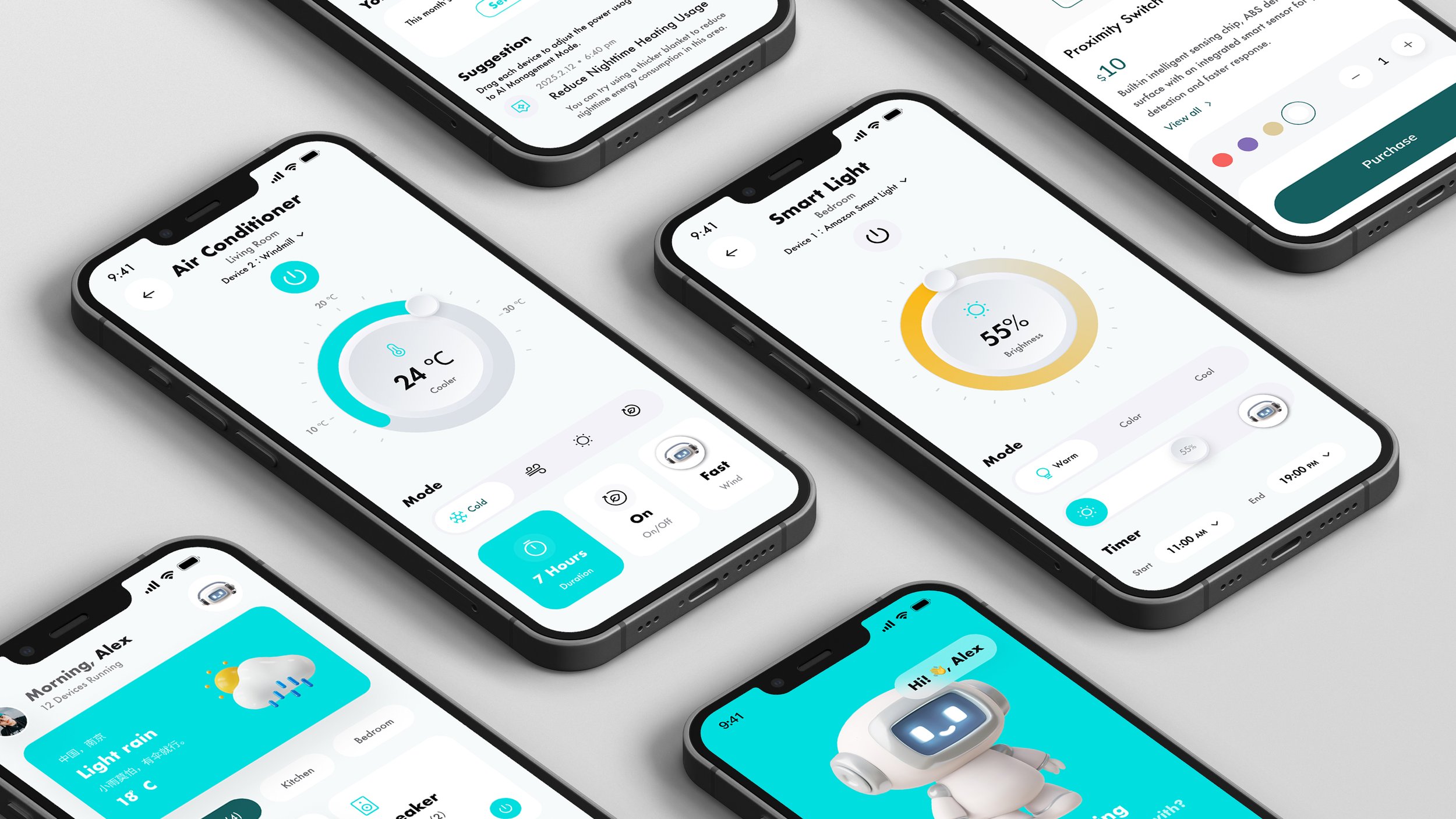

Going Forward

Usability Testing & Refinement
Conduct beta testing with a diverse user base to refine AI accuracy, UI design, and overall app functionality.
AI Algorithm Enhancements
Improve AI capabilities for more precise energy predictions, adaptive automation, and efficient power management.
Security & Privacy Measures
Strengthen data encryption, user authentication, and AI privacy settings to ensure secure smart home management.
Market Expansion & Partnerships
Collaborate with smart home device manufacturers and energy providers to enhance compatibility and adoption. Show UniHome’s modular capabilities to potential partners, demonstrating how its AI-powered energy management system can be integrated into existing smart home apps.
Sustainability Features
Develop tools that integrate with solar energy systems, carbon footprint tracking, and eco-friendly automation settings.
Onboarding & User Support
Create step-by-step tutorials, AI-assisted onboarding, and a dedicated customer support system to ensure a smooth user experience.




